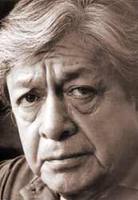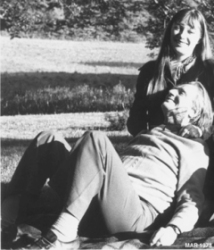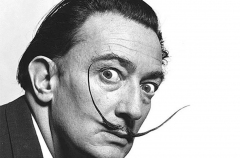
Guayasamín was born in Quito, Ecuador.
Guayasamín won the first prize at the Ecuadorian Salón Nacional de Acuarelistas y Dibujantes in 1948. He also won the first prize at the Third Hispano-American Biennial of Art in Barcelona, Spain, in 1955. In 1957, at the Fourth Biennial of São Paulo, he was named the best South American painter.
Guayasamín met Jose Clemente Orozco while traveling in the United States of America and Mexico from 1942 to 1943. They traveled together to many of the diverse countries in South America. They visited Peru, Brazil, Chile, Argentina, Uruguay and other countries. Through these travels he observed the indigenous lifestyle and poverty that appeared in his paintings.
In 1988, he painted a very controversial mural depicting the history of Ecuador. The Congress of Ecuador asked him to do so. However, the United States Government criticized him because the one of the paintings showed a man in a Nazi helmet with the lettering "CIA" on it.[citation needed]
The artist's last exhibits were inaugurated by him personally in the Luxembourg Palace in Paris, and in the Palais de Glace in Buenos Aires in 1995. In Quito, Guayasamín built a museum that features his work. Guayasamín's images capture the political oppression, racism, poverty, Latin America lifestyle, and class division found in much of South America.
Guayasamín dedicated his life to painting, sculpting, collecting; however, he was an ardent supporter of the communist Cuban Revolution in general and Fidel Castro in particular. He was given a prize for "an entire life of work for peace" by the United Nations Educational, Scientific and Cultural Organization. His death on March 10, 1999 was marked by a day of national strikes by the indigenous people (whom he spent his life supporting) and other sectors of society, and was considered a great loss to Ecuador. He is still lauded as a national treasure.
In 2002, three years after his death, Guayasamín's masterwork, La Capilla del Hombre ("The Chapel of Man"), was completed and opened to the public. The Chapel is meant to document not only man's cruelty to man but also the potential for greatness within humanity. It is co-located with Guayasamín's home in the hills overlooking Quito.
References[edit]




.png)